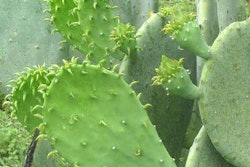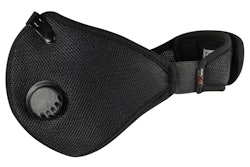 The path through this shade garden is made of flat stone laid on its edge, a nice complement to the ostrich fern that banks its left side.
The path through this shade garden is made of flat stone laid on its edge, a nice complement to the ostrich fern that banks its left side.Photo: statebystategardening.com
Shade. In the summer, everyone wants a piece of it, but many plants cannot survive in the shadow of trees and clients are left with ugly bare patches of land. Shade gardens are a solution that creates a secluded and much cooler oasis.
Among the first things to consider when planning a shade garden, of course, is your site. As reported recently at Houzz.com, a home and landscape design website, choosing the right plants for the job requires mapping out areas of deep shade and light shade.
Not only do different types of trees produce different amounts of shade, but their age and pruning also have an effect. Linden trees, for example, are known for casting deep shade. Naturally, quantity counts, too, so a site with lots of trees is likely to have a dense canopy for at least part of the year.
Writing in the State-By-State Gardening newsletter, garden and floral designer Troy B. Marden notes that deep shade can also exist on the sides of buildings, fences, or near other structures that create shadows with hard, defined lines.
Because woodland plants grow best in deep shade, they’re worth considering for your garden. Ferns are an obvious option and species such as the Japanese painted fern, New York fern, and lady fern are good choices. Rohdea, hellebores and hostas are other possible deep-shade plants to use.
Grass often struggles without enough light, so going with a shade-loving groundcover could be the better route at times. Pachysandra is highly resistant to the darkness and a variety called ‘Variegata’ is outlined in a creamy white, which breaks up the green. Creeping Jenny and Sweet Woodruff are suggested by Great Garden Plants if looking for a fast-spreading filler between the shrubbery.
If working with dappled or lighter shade, the color palette includes more options. By choosing flowering shrubs such as azaleas and rhododendrons, you can add color, texture, and height. Texture can be accomplished without flowers, if desired, by various foliage; for instance, Better Homes and Garden suggests combining golden meadow rue, anemone, purple-leaf coralbells, and umbrella plants.
Once you’re confident the design capitalizes on the site’s shade characteristics with appropriate plants and groundcover, you’ll be ready to talk with your client about water features, hardscaping, or other elements to create a focal point in the shade garden.









